- REMOVES 22 PINTS PER DAY – This GE Energy Star dehumidifier removes 22 pints of moisture from the air every day. This model is ideal for damp spaces, bedroom, garages, or basement with excessive moisture and high humidity.
- SMART DRY – The Smart Dry feature automatically adjusts the dehumidifier fan speed based on the humidity levels in the room, providing optimized convenience; or choose from three fan speeds for customized comfort.
- EMPTY BUCKET ALARM – This feature alerts you if the bucket, which has a capacity of 1.1 gallons, is full or missing. The alarm will sound for 10 seconds to let you know it’s time to empty or re-install the bucket.
- CLEAN FILTER ALERT – The unit works best with a clean filter, so we’ll remind you when it’s time to clean it. Filter should be checked and cleaned at least every 250 hours of operation and can be easily removed from the unit.
- EASE OF USE – The pocket handles and easy roll wheels make it easy to transport between rooms. Other features like the adjustable humidistat, auto restart and auto defrost features provide ease of use and effective moisture removal from damp rooms.
GE Energy Star Portable Dehumidifier 22 Pint, Perfect for Bedroom, Basement & Garage or Rooms up to 1500 Sq Ft, Ideal for High Humidity Areas, Complete with Empty Bucket Alarm &…
$173.99
Last updated on Details
Category: Dehumidifiers
7 reviews for GE Energy Star Portable Dehumidifier 22 Pint, Perfect for Bedroom, Basement & Garage or Rooms up to 1500 Sq Ft, Ideal for High Humidity Areas, Complete with Empty Bucket Alarm &…
Add a review Cancel reply
Related products
Sale!
Rated 4.86 out of 5
Sale!
Rated 3.85 out of 5
Sale!
Rated 4.77 out of 5
Sale!
Dehumidifiers
Rated 5.00 out of 5


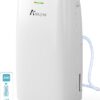
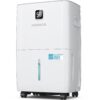
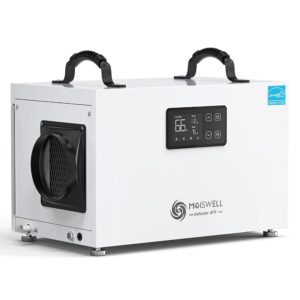
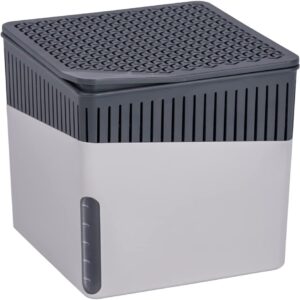
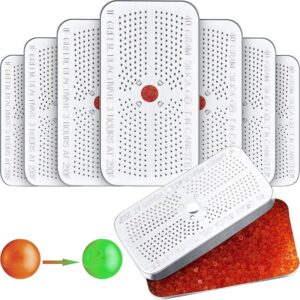

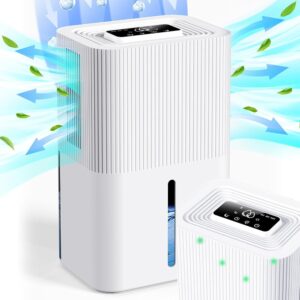
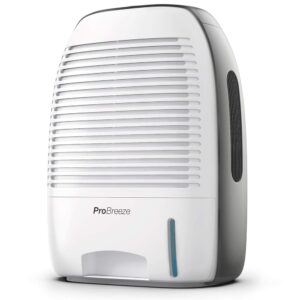
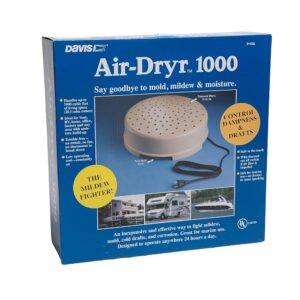
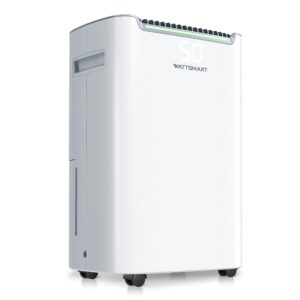
Amazon Customer –
I disabled the incredibly annoying alarm sound (that rings when the bucket gets full, and sounded like a smoke detecter to two separate folks who heard it), but it required taking apart the unit with a screwdriver and literally yanking the “buzzer” part off of the circuit board. I’ll write more directions below for those curious — (PLEASE UNPLUG THE UNIT FIRST TO AVOID RISK OF ELECTRIC SHOCK). There was no way to disable the alarm sound using the buttons or normal controls. That’s why I resorted to taking the machine apart. Imagine in the middle of the night, being woken to a piercing alarm, just like a smoke detecter sounds (seriously GE? come on! haha). And unless you empty the bucket, the alarm repeats — not sure, maybe a half hour later
The 22 pint dehumidifier is about what I expected otherwise! The bucket fills up for me daily, in weather that’s only somewhat humid (summer in northern California), but I often leave a window fan pushing outside air in, so there’s more humidity to remove. And anyhow, units with larger buckets were big enough to start looking quite ugly, per my taste
If you’re handy, and want to disable the sound:
Note: This will disable all sounds for the unit. Your unit will be silent at all times, even if you press a button on it (there will no longer be a chirp/beep/sound when you press buttons on it).
You risk death by electric shock if you do not unplug the unit from the wall outlet (main power) first. You risk damaging your unit beyond use (though I had no issues myself at all) and your warranty will be voided. Even when unplugged, I think some electronics can hold an electric charge in parts called capacitors.. I think in theory these could shock someone. Unsure. So even when unit is unplugged from the wall outlet, avoid touching any exposed metal parts, especially on the circuit board inside, to reduce risk of shock and reduce risk of damaging the circuit board also. Pick up the circuit board by the edges. Also, never touch the condenser (the big metal radiator contraption directly under the air filter), because even a light touch can bend the metal fins (not great for the unit). I’m not an expert. Only do this if you take sole responsibility for all risks and consequences entailed, including ones I haven’t thought of haha.
You’ll need one phillips and one flat-head screwdriver. These directions were for the 22 pint model I bought. Yours may vary from mine Unplug unit from the wall. Start unscrewing any metal screws you see on the sides, front, or back of dehumidifier. My unit had 2 screws on *each side* of dehumidifier (look inside the recessed side “handles”). There were 4 screws you needed to remove on the front of my dehumidifier, but these 4 screws are hidden behind the water bucket. Remove the water bucket (and put it aside) to reach these ~4 screws for removal. I had to remove 4 screws from the back side of the unit (take off and put aside the air filter to expose two hidden screws underneath it). Remember when taking off the air filter, don’t touch the big metal condenser that’s right underneath of it.. it has tons of metal fins that bend easily / break).
Now we pull off the white plastic casing from the whole dehumidifier. Assuming you have the same 22-pint unit as mine, pull off the *rear* half of the white encasing first. It may snap gently. Tug a little, but not too hard. It’s sort of clipped into place so you’ll have to pull a bit.. but pulling too much risks cracking plastic. You take responsibility if you crack your plastic casing haha. Especially since I don’t know all the variations / other models. We now have to remove the front half of plastic casing. But before that’s possible, you need to to remove … I think 2 total screws (from each side) of the unit (4 total screws). These are holding the front encasing to the unit. And these 4 screws are only exposed after removing rear encasing. Then pull the front white plastic encasing off of the unit too. This was the part I found trickiest. It really wanted to stick in place. It is held in place by some firm plastic clips, located near the top/front of the dehumidifier. You just have to pry it firmly. Focusing on where the front white casing meets the top of the dehumidifier, I pried the front casing away from the dehumidifier slowly, working from the sides and going inward. Again, not responsible if you break your own dehumidifier haha. Now I had the white plastic front, back, and sides “off” of my dehumidifier. Now look at where all the buttons are located on your unit. That top part (let’s call it the “top-face”) has to come off, because on it’s underside you’ll find the circuit board. This again involves prying apart some plastic clips gently but firmly. You’ll see wires on either side of the unit; as you remove the “top-face,” be sure to not yank or break these wires. The wires are held in place sometimes by plastic clips or barriers. Take photos so you remember where to put the wires back exactly when you are done. You’ll need to take the wires out of the clips or paths they are held in.. to give yourself more “slack” or room, so that you can pull the “top-face” away from dehumidifier. Keep water off of the wires and circuit board at all times. If you get these wet or if you accidentally pinch or break a wire or electronic, then you put together the dehumidifier again and try to run it, the broken electronics, pinched wires, or wet circuit board could cause dangerous electric shocks at some later time. take a photo of the circuit board to remember how it goes, then unscrew it (for me it was 5 screws, on the board itself), and remove the board from the plastic clips holding it in place. There was a clear plastic film on my circuit board, protecting the board from dust and water I guess.. be sure to place this film exactly as it was when done; don’t discard it. After removing the circuit board, look on it’s reverse side and find the component labeled “BUZZ” or “BUZZER” — for me it was black, plastic, shaped like a very small “puck” or a short cylinder. It literally said “buzz” or “buzzer” next to it. Wedge your flat-head screwdriver underneath this puck/buzzer, and pry it off of the circuit board. This likely will permanently damage the buzzer (that’s the goal), so you can’t change your mind later haha. *Remove any loose bits of metal or plastic* (loose bits of metal floating around, could cause a short circuit later on during operation… BAD). Reverse all steps above to put dehumidifier back together. Be sure to replace the clear plastic film over the circuit board (my guess is that protects it from water or dangerous short circuits). Be sure to return all wires to the exact same paths that they were laid down in before (refer to your photos). If a wire is crammed into the wrong spot, it may get pinched or break when you later push the white encasing walls down over top of it.
David H –
We are rv full timers on property living off grid. We had planned to build, but wood prices… Our factory propane heater is basically useless in single digit cold. We switched from a ‘big buddy’ to a Mr Heater blue flame this winter. What the he** does that have to do with a dehumidifier, you ask? Unvented propane heaters emit water vapor, LOTS of vapor. And our windows have the R-value of saran wrap. Also, the walls in closed closets get cold enough to ‘sweat’, a lot. After we tried an ‘economically priced’ electronic dehumidifier with ‘limited’ success, we decided to try this one. It IS GE, tho made in China, and a few year warranty was available. A short search will show the propensity for this style of dehumidifier to tend to start leaking freon ‘just’ after the oem warranty ends. As to the unit, it works. Being on solar, especially in winter’s low output hours, we don’t run high wattage items at night. We are still getting 2-3 quarts of water a day at about 70 degrees. Some talk of hot air being dispelled, but I would say lukewarm at worst, at our temps. Noise on high is relative to sensitivity, but running on high with a door almost closed, no closed doors with a cat in the house, between it and us, it’s too quiet to hear without trying, and indistinguishable with any noise, speech, radio, tv, in the room. Certainly no worse than the desktop fan we use in the summer at night. We’ve just had it a couple weeks and it will only be used a few months a year, so we’ll see how it holds up and update. so, a few weeks later and it’s working fine. Even tho just running when the solar panels are getting some sun, it still takes out a couple quarts a day. A major consideration tho, is the effect on my asthma. We noticed last year when we started using the big buddy, and again with the new heater this year, I was coughing a lot from the humidity. Within a couple of days of starting to use this item, my coughing has all but disappeared, even at night when it is off. This is NOT medical advice, purely anecdotal. Well worth the price, if just for that. No more sucking on cough drops in bed!!
emil purino –
Great size for our condo. Easy to operate and very effective in lowering humidity levels.
Helen E –
This works just as advertised, is very efficient and I have been able to get the hose which is included to empty directly into a drain. Very happy with this. purchase. ( and I tried out several before purchasing this one!)
nhodges –
This dehumidifier works so well! Our house is very humid and after running it for maybe 4 hours I had to empty the tank. So far we are impressed by it. The drawback is that it’s kind of loud. Makes a vibrating noise that doesn’t stop on any fan setting. Jusr wish it were a tad quieter. Also, this is the second one I have gotten. The first one was clearly used and I returned it and this one we think may have been used too but looked better than the first one.
Billi Bob –
Looks very nice and is quiet in the basement. Hooking an optional discharge hose was kind of difficult as you need to take the bucket out and work inside the bucket area. It did reduce the humidity to an acceptable level in a few hours. I noticed this week that it was not running and the room humidity was high. The lights were on and the numeric gauge read 60 and the setting was 40 which means it should still be on. I power cycled the dehumidifier and it turned on again. It does continue toy stop running for no apparent reason and there are no faults. The filter is clean.
Pat Arnold –
Ordered a couple months ago and it has been running great and really dried out my basement.